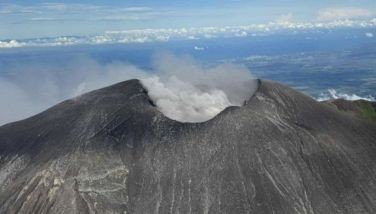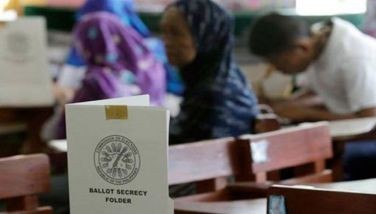Arctic Garden of Eden: RP seeds in Box No. 1
LONGYEARBYEN, Norway (AP) – Norway’s “doomsday” seed vault, built to protect millions of food crops from being wiped out in wars or natural disasters, had European leaders thinking biblically.
“This is a frozen Garden of Eden,” European Commission President Jose Manuel Barroso said at the opening ceremony Tuesday, as guests carried the first seed deposits into the icy vault, deep within an Arctic mountain in the remote Norwegian archipelago of Svalbard.
“It is the Noah’s Ark for securing biological diversity for future generations,” said Norway’s Prime Minister Jens Stoltenberg.
Svalbard Global Seed Vault, just 1,000 kilometers (620 miles) from the North Pole, is designed to house as many as 4.5 million crop seeds from all over the world, including deposits from the International Rice Research Institute (IRRI) in the Philippines and the International Maize and Wheat Improvement Centre (CIMMYT) in Mexico.
It is built to withstand global warning, earthquakes and even nuclear strikes.
It will serve as a backup for the other 1,400 seed banks around the world, in case their deposits are hit by disasters, economic collapse, war or climate change.
For example, war wiped out seed banks in Iraq and Afghanistan, and one in the Philippines was flooded in the wake of a typhoon in 2006.
“This is unique. This is very visionary. It is a precaution for the future,” said 2004 Nobel Peace Prize laureate Wangari Maathai of Kenya. She is a board member of Crop Diversity Trust, which collects the seeds for the Svalbard vault.
The trust was founded by the UN Food and Agriculture Organization and Biodiversity International, a Rome-based research group.
“It is very important for Africa to store seeds here because anything can happen to our national seed banks,” Maathai said, bundled up against the cold.
Stoltenberg and Maathai made the first deposit in the vault - a box of rice seeds from IRRI.
IRRI, with headquarters and facilities at campus of the University of the Philippines in Los Baños, Laguna, developed the miracle rice, a hybrid that doubled yields in the 1960s.
The seeds for the global vaults are packed in silvery foil containers - as many as 500 in each sample - and placed on blue and orange metal shelves inside three 10-by-27-meter (32-by-88-foot) storage chambers. Each vault can hold 1.5 million sample packages of all types of crop seeds, from carrots to wheat.
Other guests carried dozens of other boxes through the steel and concrete-lined tunnel leading to the vaults.
The Svalbard facility, built by the Norwegian government for US$9.1 million (euro6.1 million), will operate like a bank box. Norway owns the bank, but the countries depositing seeds own them, and can use them as needed free of charge.
The vault’s daily operations will be overseen by NorGen, a gene bank in an old coal mine on Svalbard that is jointly owned by the Nordic countries.
Svalbard is cold, but giant air conditioning units have chilled the vault further to -18 C (-0.4 F), a temperature at which experts say many seeds could last for 1,000 years.
After the ceremony, Stoltenberg and Barroso flew by helicopter on a three-hour tour of the remote region. They landed on a vast glacier and stopped at the research stations of Ny-Aalesund, some 100 kilometers (60 miles) northwest of Longyearbyen, the main settlement on Svalbard.
Stoltenberg told reporters that he wanted Barroso to see the impact of climate change first hand, in the form of melting ice.
“We see it, and the potential is dramatic, because if ice is starting to melt on land in Greenland and also on Antarctica, then we can see very big increases in sea levels,” he said.
Barroso said such melting glaciers show that “we see the need to act ... to avoid real challenges to balance in the life of our planet.”
- Latest
- Trending
































